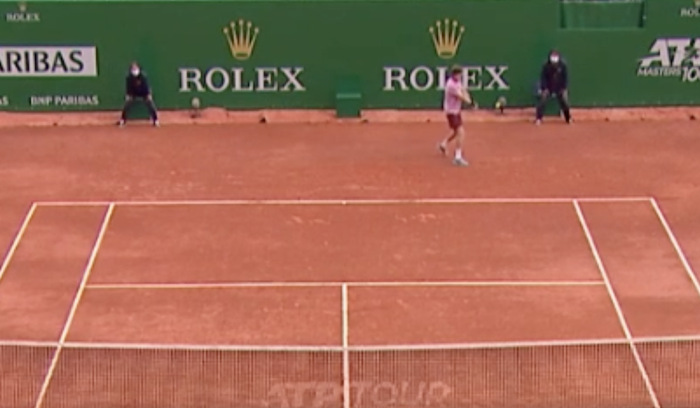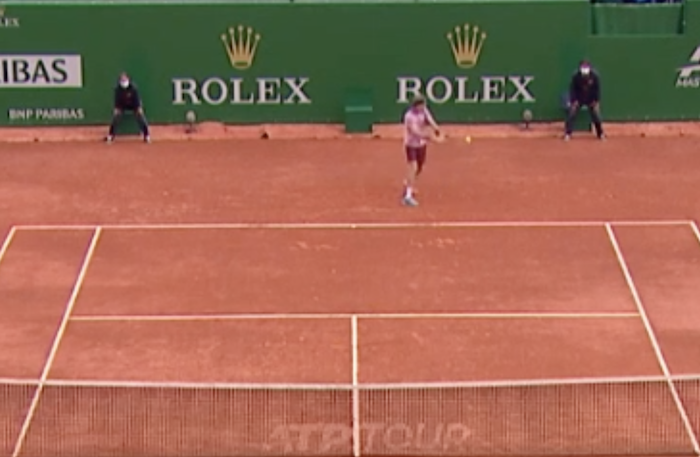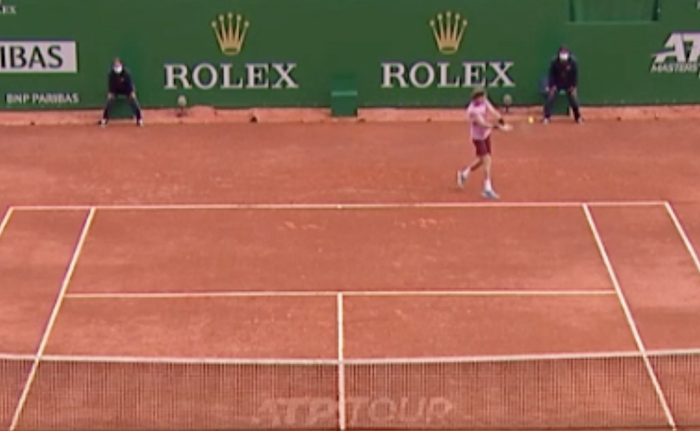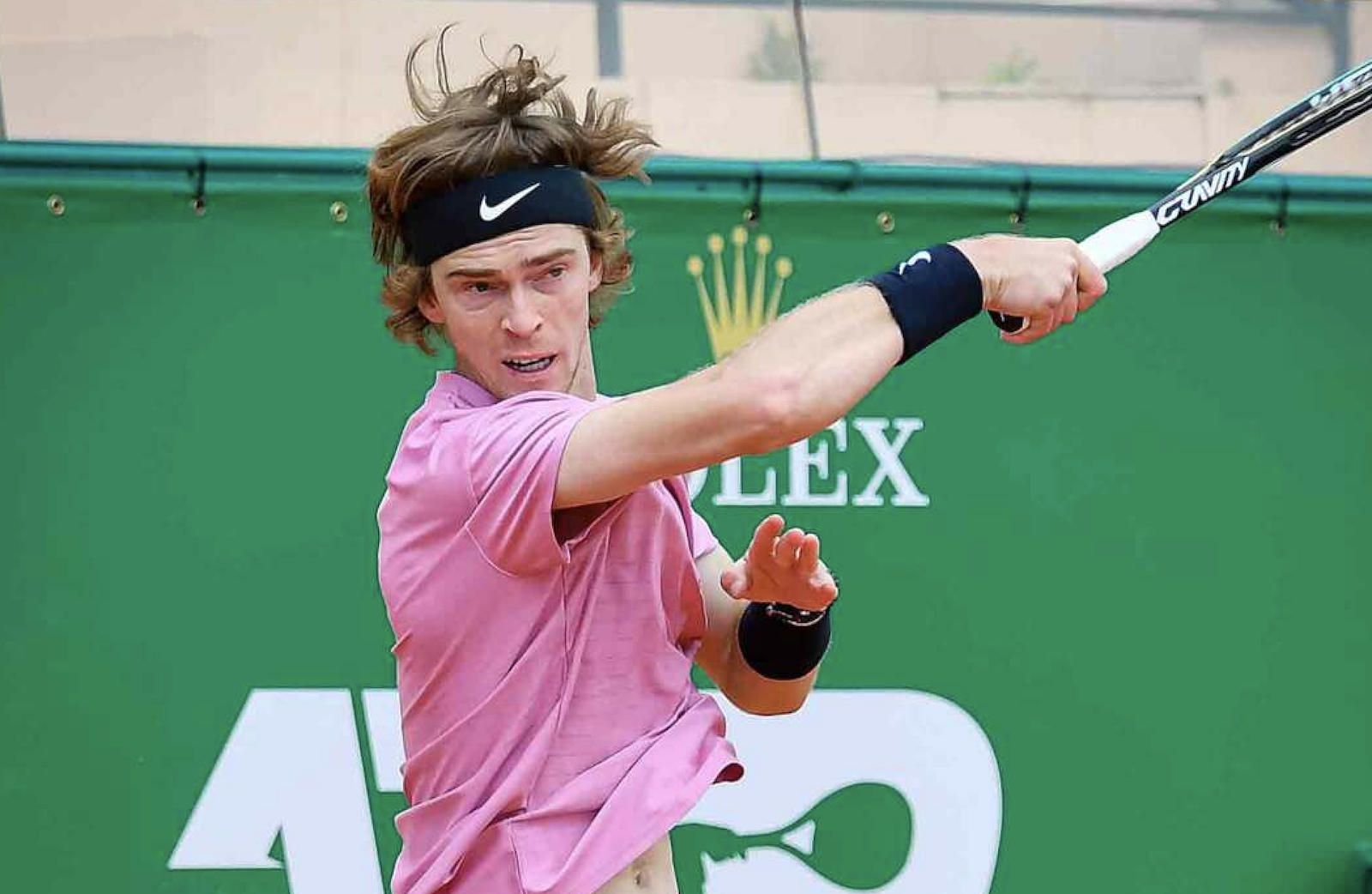G’day,
Andrey Rublev’s forehand caught fire in Monte Carlo this week. He was hitting it from all compass points of the baseline, especially as a run-around forehand from the Ad court. These run-around forehands were shots that opponents were trying to get to Rublev’s backhand, but he was too quick. He was a step ahead, already sneaking early to the Ad court to turn a solid backhand into a missile forehand.
Except in the final.
Stefanos Tsitsipas defeated Andrey Rublev 6-3, 6-3 on Sunday afternoon to claim his maiden Masters 1000 title. The match was over early as Tsitsipas raced to a 3-0 and 4-1 lead. Rublev looked flat. He looked tired. He never generated a break point against Tsitsipas for the match and he never saved one on his serve, going 0/3.
Let’s get back to those forehands…
Rublev hit 144 MORE forehands than his opponents in his first four matches against Salvatore Caruso, Roberto Bautista-Agut, Rafael Nadal, and Casper Ruud. He totaled 719 while his three opponents managed 575.
Total Forehands Hit In The Match
- Semi-Final: Rublev 79 / Ruud 84 = -5
- Quarter-final: Rublev 262 / Nadal 187 = +79 forehands
- Rd16: Rublev 319 / Bautista-Agut 252 = +67
- 2nd Rd: Rublev 59 / Caruso 52 = +9
- Total: Rublev 719 / 4 Opponents 575 = +144
Smashing forehands is what got him to the final. It’s important to note that Ruud hit more forehands than Rublev in the semi. Maybe that was a sign of things to come. Not smashing forehands is unfortunately what happened in the final.
- Final: Rublev 93 Forehands / Tsitsipas 99 Forehands = -6
Hitting less overall forehands had a snowball effect on pretty much anything and everything that happened in the final. Tsistsipas won every forehand battle there was to win in the final, including hitting more run-around forehands, hitting more forehand winners, committing fewer forehand errors, and forcing more errors on the other side of the net from a forehand.
Forehand Returns
Tsitsipas had a thirst to hit a forehand return whenever he could. He ran around A LOT of serves directed to his backhand and upgraded to a more potent forehand return. This helped him find Rublev’s backhand immediately in the rally and also helped to attack Rublev’s forehand later in the rally. When Rublev was getting to hit forehands, they were invariably not the ones he wanted.
- Tsitsipas Forehand Returns = 36 (31 made / 5 errors)
- Rublev Forehand Returns = 20 (15 made / 5 errors)
Tsitsipas was hunting forehand returns. He was locked on to moving left and upgrading from a backhand return to a forehand return. Rublev was not.
Like this analysis?
Consider the strategy course The 25 Golden Rules of Singles Strategy.
Run-Around Forehands are #17
First Game 30-30
The first sign of trouble for Andrey came just three points into the match. Tsitsipas was serving at 30-0 and Andrey ended up winning a 10 shot rally. Normally that would be a good thing. But it’s HOW Andrey won it that threw up a red flag in my strategic mind.
Andrey “could of – should of” ran around Tsitsipas’ 2nd serve and hit a forehand return instead of a backhand return. He didn’t. The next four shots he hit were all backhands as well. Five shots hit = five backhands that all were ripe for an upgrade to a more potent forehand. Take a look at the screenshots below to see how central in the court Rublev is standing hitting backhands.
Four Consecutive Backhands in Set 1 at 0-0, 30-0




Points With Forehands / Forehand Returns
This is a fascinating new metric. I counted how many points in the match either play did NOT hit a forehand groundstroke or forehand return. Yes, I know that sometimes good things happen without them, but the final count is telling and helps us understand why Andrey was not hitting enough forehands overall.
Total Points Without A Forehand Or Forehand Return
- Tsitsipas = 28
- Rublev = 43
This is such a killer stat for Andrey. The main match-up that I was expecting was Andrey’s forehand trying to throttle Stefanos’ backhand. It simply didn’t happen enough.
Forehand Rally Balls / Winners / Errors
When you examine just forehands that went in the court, the two players came over quite even.
Forehands In Play
- Tsistsipas = 77
- Rublev = 74
This stat, sitting alone, is somewhat misleading. It does not include winners and errors. So let’s add them to the mix.
Forehand Winners
- Tsistsipas = 11
- Rublev = 6
Forehands Errors (Forced & Unforced)
- Tsistsipas = 11
- Rublev = 13
It’s very impressive that Tsistsipas had 11 forehand winners and 11 forehand errors for the match. To come out dead even in this metric is a big win!
Other Side Of The Net
The last forehand metric that I recorded was if the opponent committed a winner or error from a forehand. This is another area where Tsistipas’ forehand took the honors.
Tsistipas Forcing Errors When Hitting A Forehand Or Forehand Return
- Rublev Forehand Errors = 7
- Rublev Backhand Errors = 9
- Total = 16
Now let’s look at how Rublev’s forehand did.
Rublev Forcing Errors When Hitting A Forehand Or Forehand Return
- Tsitsipas Forehand Errors = 4
- Tsitsipas Backhand Errors = 4
- Total = 8
Tsistsipas’ forehand was twice as lethal as Rublev’s in extracting an error from it. Tsitsipas forced 16 errors while Rublev only forced eight. Not only did Rublev not hit enough forehands, but he didn’t do enough damage when he did hit them.
Lastly, here are the winners struck by the opponent when a forehand or forehand return was hit.
Rublev Hitting Winners From Tsitsipas’ Forehand Or Forehand Return
- Rublev Forehand Winners = 2
- Rublev Backhand Winners = 2
- Total = 4
Now let’s look at how Rublev’s forehand did.
Tsitsipas Hitting Winners From Rublev’s Forehand Or Forehand Return
- Tsitsipas Forehand Winners = 3
- Tsitsipas Backhand Winners = 1
- Total = 4
This last metric ended even for both players.
SUMMARY
When you come out flat, your energy is lower. Your movement is slower. Everything is unfortunately dialed down a notch. That includes your forehand.
The commentators picked up on this very early on, as I did, as you probably did as well if you were watching.
In this match, it really manifested in Rublev not looking for nearly as many run-around forehands in the Ad court as he did all week. Add in the fact that this is what he should have been doing the MOST (pounding his forehand at Tsitsipas’ backhand) and the prime strategy that got him to the final is basically tossed out the window.
It’s a good lesson. Feet = forehands.



